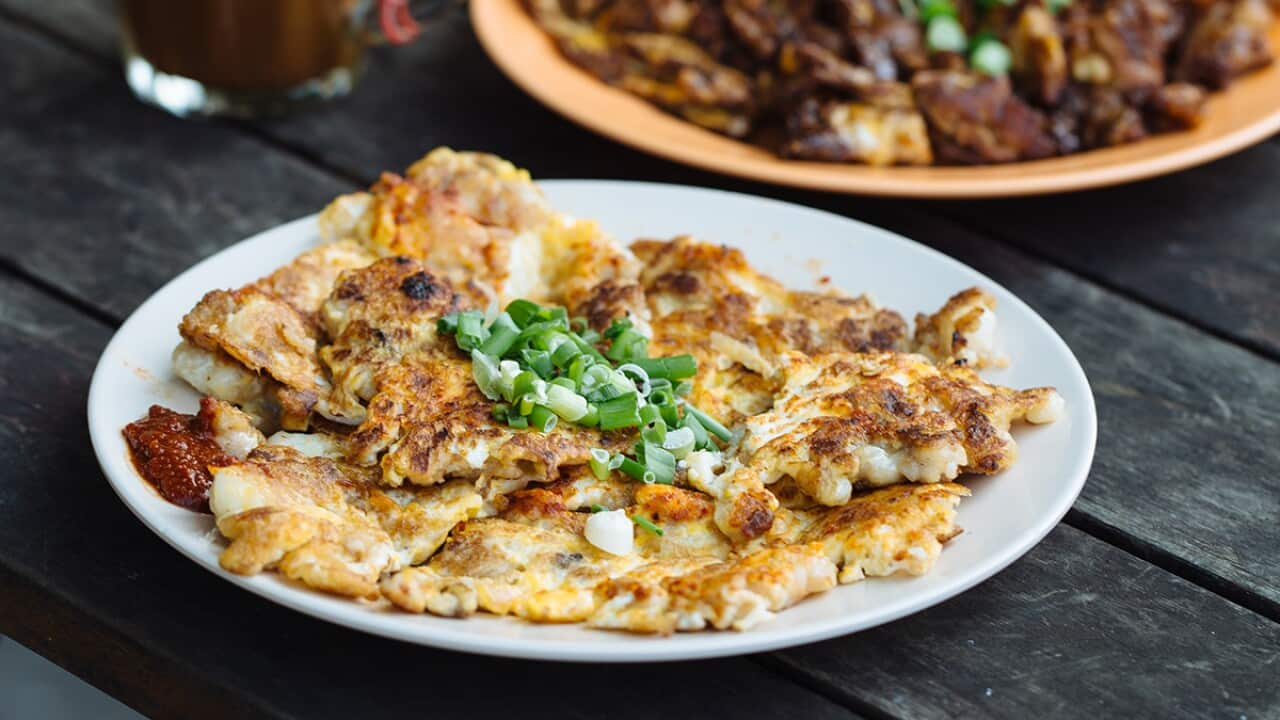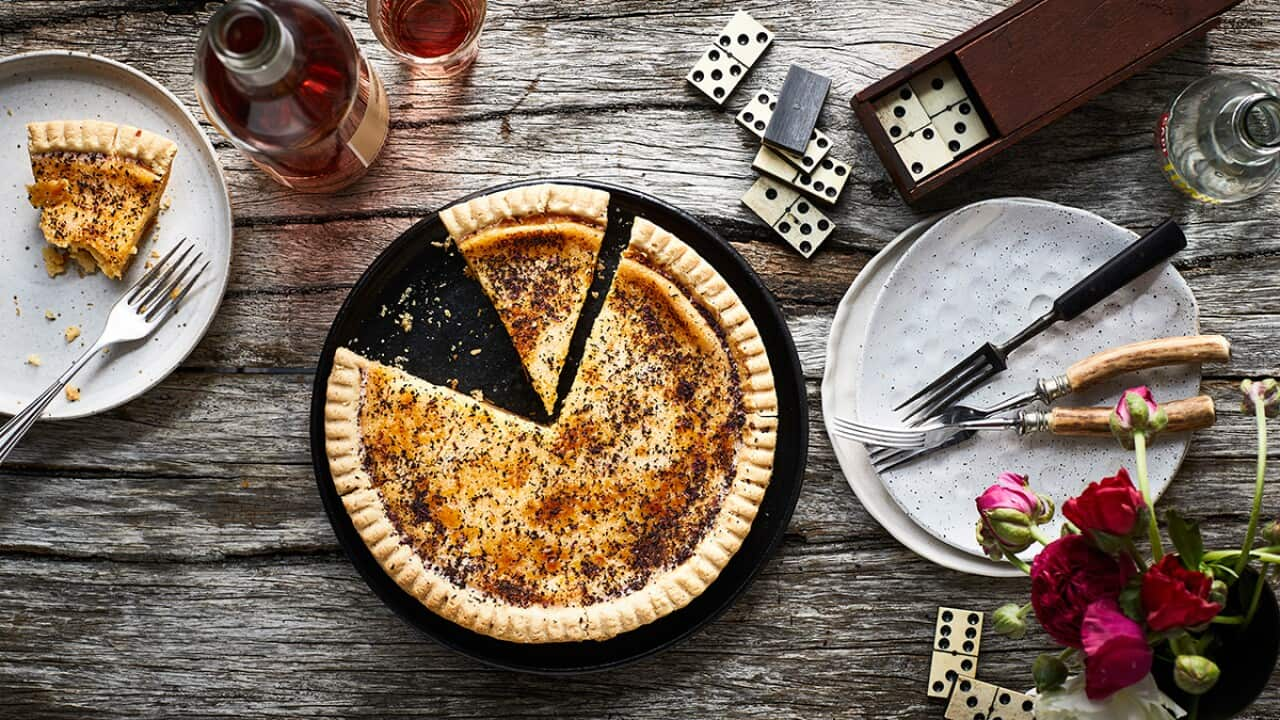Stroll through the Zion Riverside Food Centre in Singapore and you’ll see locals chowing down on carrot cake – but not the dessert topped with cream cheese icing, popular in Western countries. In fact, Singaporean carrot cake (known as chai tow kway) couldn’t be further from a ‘cake’. It’s a popular hawker-style street food, made from flash-frying radish cake or daikon, eggs, chilli sauce and – wait for it – no carrots whatsoever. In this version of carrot cake, cream cheese icing is commonly swapped out for a sprinkling of spring onions. Eaten all through the day in countries like Singapore, Malaysia and Taiwan, this comfort food represents the pinnacle of Hawker culture around the world.
“I first tried chai tow kway as a child at the market stall in Singapore,” Helina Lee, a Singaporean home cook and Sydneysider who retains fond memories of carrot cake. “While my Dad was working, my siblings and I would have yummy, delicious plates of carrot cake,” Helina explains how the dish has morphed over the years. “Big chunks of crispy chai tow kway used to be served on a big green leaf with toothpicks, which was tricky for young children to pick up. We also used to bring our own eggs to the market – cheaper than using the hawkers’!”
Wait – no carrots?
Nope, not even one. According to Lee, the misnomer is derived from the Teochew (a dialect commonly spoken and understood in South-East Asian countries) word for radish. “It’s interesting in the sense that there was never really a word for white radish, so it was loosely called a carrot,” she explains. ‘Cake’ refers to the way the rice flour binds the ingredients.
The name has serious sticking power: “Chai tow kway is a Teochew-based dish, so Singaporeans don’t think of carrots when we hear the word ‘carrot’, we think of white radishes. Everyone knows exactly what we mean when we talk about carrot cake – and it’s not the dessert.”
Go hunting for an American-style carrot cake in Singapore or Malaysia and you might turn up empty-handed – or laden with plates and plates of radish cake.
It doesn't matter if you’re black or white
Chai tow kway comes in two varieties – black and white. Despite their disparate appearance, they’re not so different in terms of preparation of ingredients. Black carrot cake obtains its colour from dry soy sauce, which lends a sweeter flavour to the dish. For many, it’s a matter of personal preference.
The white version was popularised by famed hawker Lau Goh in Singapore in the 1960s. Forty years later, his son Peter pumps out both black and white chai tow kway all day long the Zion Riverside Food Centre.
Breakfast, lunch, dinner, or all of the above?
“It's definitely the best comfort food because it’s eaten throughout the day from breakfast through to supper and all meals/snacks in between,” says Helina.
It can be served as a side dish, or as a main meal in its own right. When it comes to chai tow kway, there are no rules. Both black and white fried 'carrot cakes' are eaten for breakfast, sometimes with pork chops or other accoutrements…
Alright – where can I get it?
Bad news for Australians: we might be stuck with our dessert version of carrot cake, at least for a little while. “I haven’t seen it in Sydney, although I’ve heard “talk” of it being in Melbourne soon,” says Lee. “I’d love to see it in Australia, especially Sydney, though the limited availability of radish makes it really tricky.”
Lee admits that if we want something done, we should probably do it ourselves. “While we wait for it to come to Sydney, if you miss it or want to try it, give it a go and MAKE IT,” she says. Planning on giving chai tow kway a go? Try and let us know how you go.

Fried carrot cake (chai tow kway) Source: Sharyn Cairns






